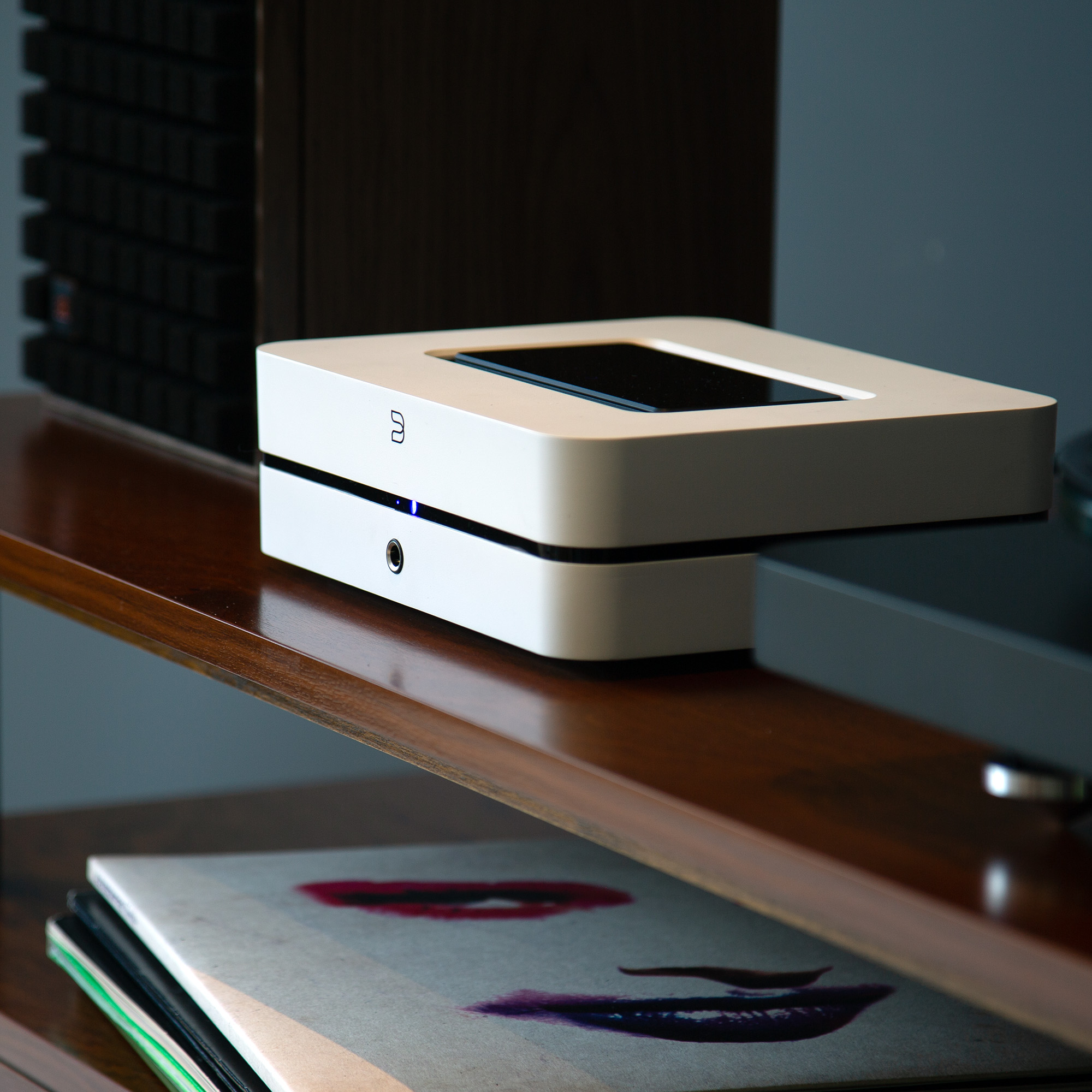USD $1199 | GBP £945 | EUR €1,115 | AUD $1,790 | CAD $1,640
Pros
- 100W/channel DirectDigital amp with clean, powerful sound and tight bass
- Dedicated center channel output enables true 3.1 or 5.1 setups
- Support for 24-bit/192kHz, DSD256, and all major streaming platforms
- Optional Dirac room correction support for precision tuning
- Extensive I/O: HDMI eARC, RCA, optical, USB-C, LAN, sub-out
- BluOS app is refined, fast, and full-featured with local server mode
- Bluetooth 5.2 with aptX Adaptive + 6.3mm headphone jack with AAA tech
- Wireless rear speaker support via BluOS Bonded Link, no WiFi required
- Smart home integration with Alexa, Control4, Crestron, and more
Cons
- Dirac room correction is not included, must be purchased separately
- No onboard display. Control requires app or proximity touch panel
- Only supports 3-channel built-in output (not full 5.1 natively)
- Looks nearly identical to previous-gen N330, hard to visually distinguish
- No HDMI pass-through or analog video inputs for legacy gear
Bluesound just released a brand new streaming amplifier, the Powernode N331. This is the next generation of the very popular Powernode N330, which was loved for its clean design, great sound, and easy-to-use app. The new Bluesound Powernode N331 got some significant upgrades over its predecessor, and I think this is one of the best streaming amplifiers under $1500.
Bluesound Powernode: Design
The new Bluesound Powernode looks almost identical to its predecessor. It comes in two finishes, White and Black. It has a smooth glass top that has some touch controls. Bluesound put in a proximity sensor under this glass top, so that when you come close to the N331, the top lights up and displays playback controls.
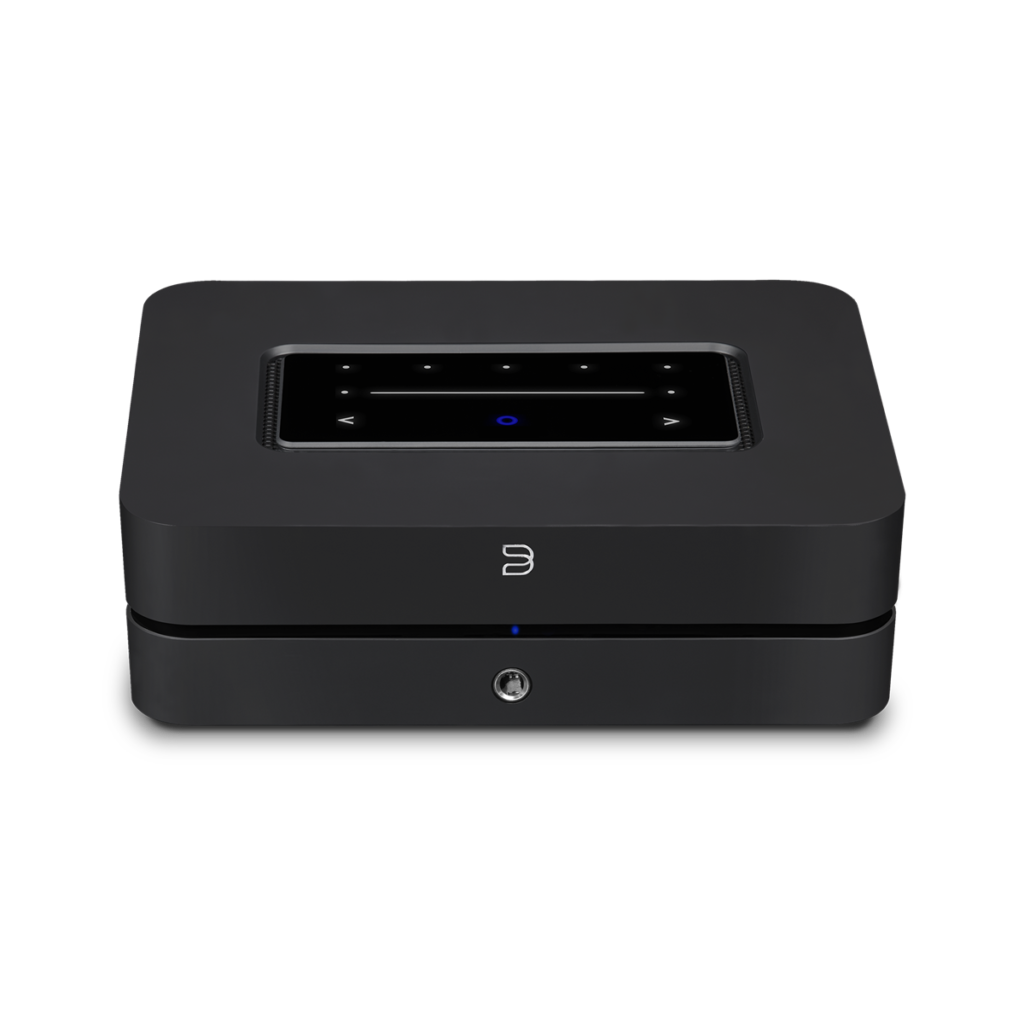
On the back panel, the Bluesound Powernode has HDMI eARC for connecting your TV, different outputs for the left, right, and center channels, and an RCA subwoofer output. You also get a LAN connection, a USB-C port, an optical input, and stereo RCA inputs for connecting CD players or turntables.
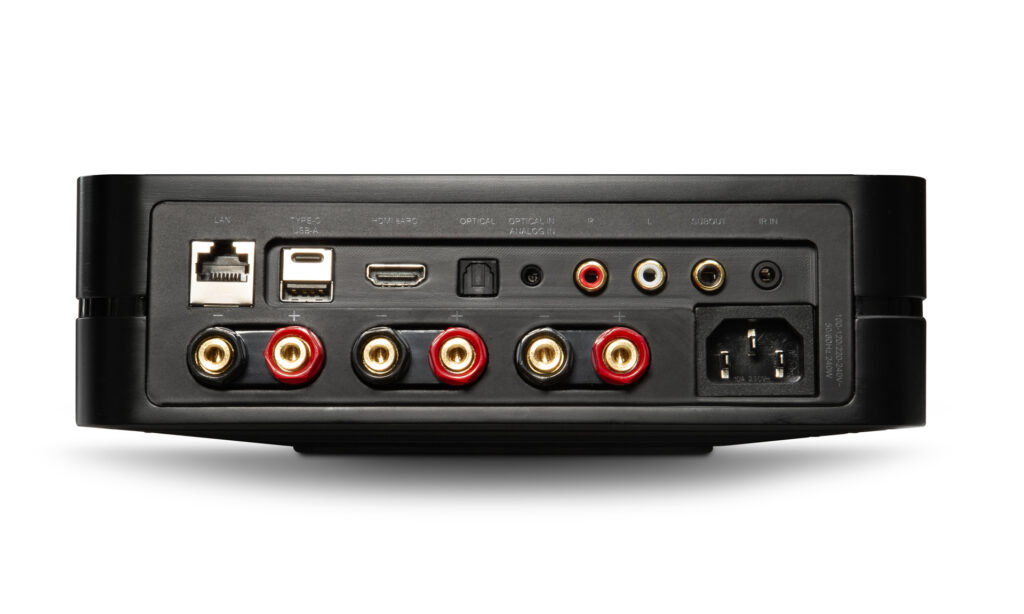
Bluesound Powernode: Features and Connectivity
The Powernode N331 uses Bluesound’s DirectDigital technology to deliver 100 watts of power into 8 ohms with two channels. It has a very low distortion rating of 0.005% and a signal-to-noise ratio of 102dBA, which allows for a cleaner and more natural sound.
The Powernode has a dedicated 3-channel output mode, which allows it to power a 3-channel speaker setup on its own. This configuration outputs 80 watts per channel, and you also get a dedicated center channel speaker connection on the back, so that the signal comes directly from your center speaker. This extra output port makes a big difference in producing sound, especially when you’re watching movies and TV shows.
You can control the Bluesound Powernode from the BluOS app. BluOS has evolved over the years with different Bluesound products, and it has improved each time. It supports 24-bit/192kHz playback, and now you also have DSD 256. The Powernode supports many streaming platforms like Amazon Music, Apple Music, Spotify, Tidal, Deezer, Pandora, and more.
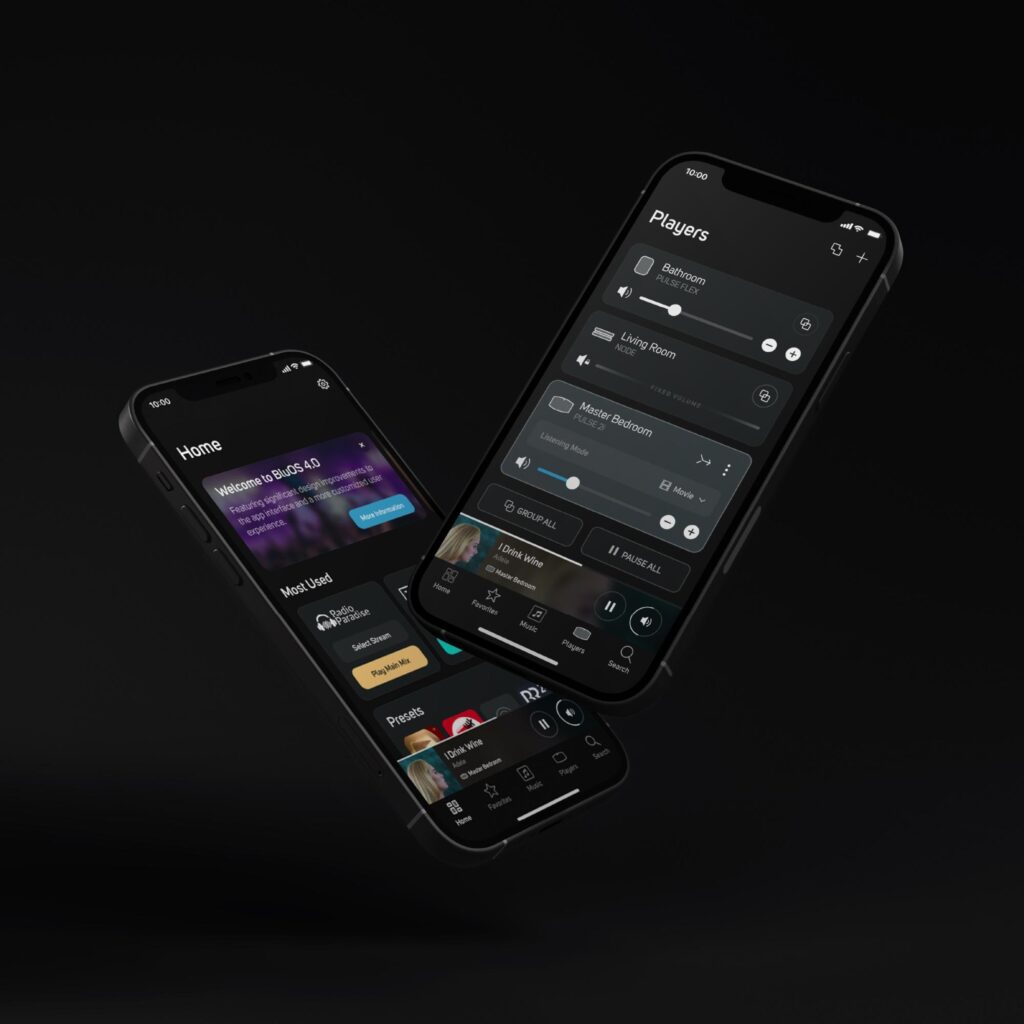
In the app, you can set crossover points for your subwoofer to fine-tune the balance between your speakers and the subwoofer. The Powernode is Roon Ready, and it uses Bluetooth 5.2 with aptX Adaptive. With Local Server Mode, you can stream music from a USB drive or a hard drive.
With the Powernode N331, you also have the option of enabling Diraq Room Correction, which is the best room correction software one can get. You will have to buy the software, but Bluesound users will get special discounts.
The Powernode can also be used in a 5.1 surround system by adding a pair of Bluesound’s Pulse Flex wireless speakers for your rear channel. You can also use an additional Powernode to power passive surround speakers, and this is possible with the BluOS Bonded Speaker Link function. This creates a wireless network between the main unit and the rear speakers, and the best part? This connection does not rely on your WiFi, so your rear speakers can perfectly sync with your main channels.
The N331 also has a 6.3mm headphone jack on the front, and it is powered by Bluesound’s Achromatic Audio Amplifier technology. This technology limits the distortion and background noise to a minimum, even with sensitive headphones.
For smart homes and custom installs, the Bluesound Powernode integrates with a wide range of systems. It supports URC, Control4, Crestron, RTI, Lutron, and Nice. Amazon’s Alexa is built in with voice control, and you also get Remote Compatibility and IR Learning.
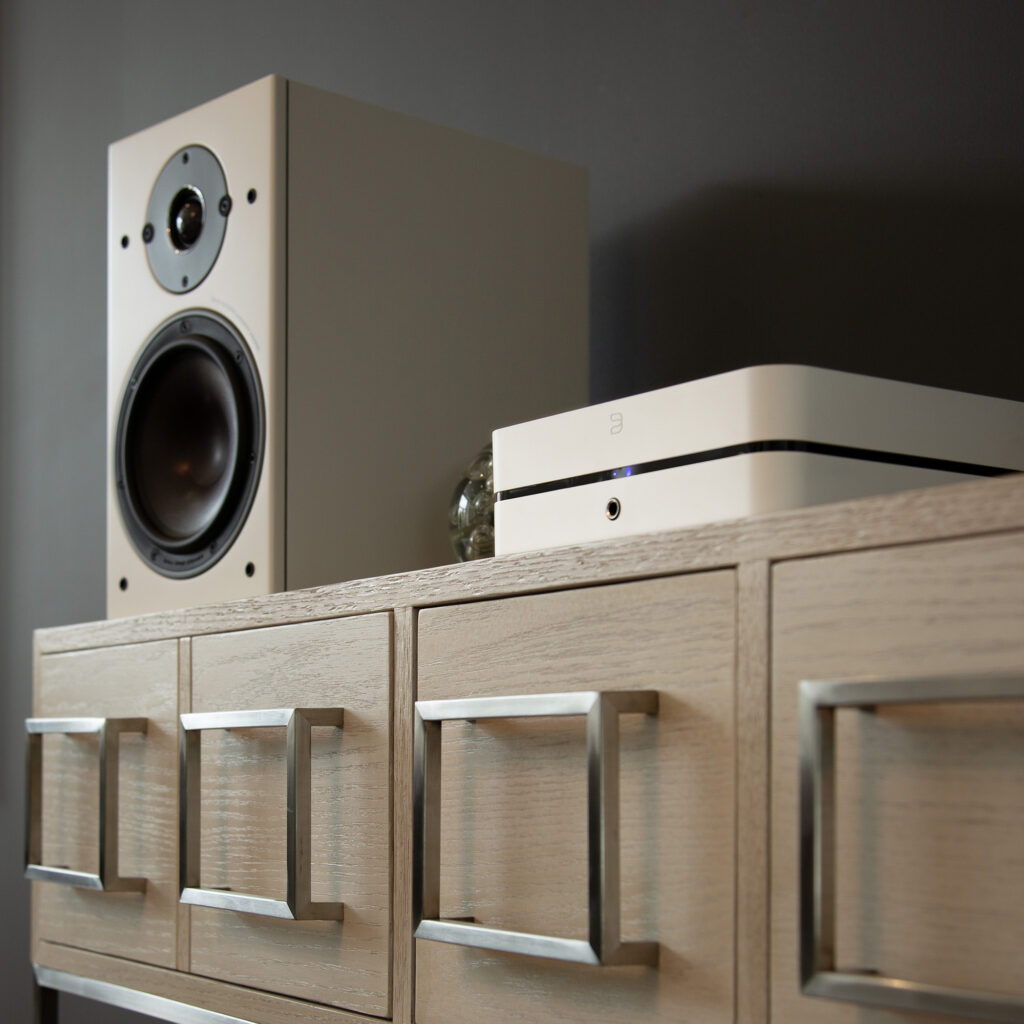
Bluesound Powernode: Sound Quality
The Bluesound Powernode N331 delivers exceptional audio performance that immediately sets it apart from its predecessor. During testing, the N331 produced noticeably more refined sound with a tighter, more controlled bass response that never felt bloated or overwhelming. The midrange clarity is outstanding, presenting vocals with remarkable naturalness and lifelike presence. Instruments maintain excellent separation across the soundstage, allowing you to pick out individual elements in complex musical passages. The highs are crisp and open without any harshness, creating an airy, three-dimensional soundscape that draws you into the music. With its 100 watts per channel output, the N331 effortlessly drives both bookshelf and floorstanding speakers, maintaining composure even at higher volumes.
The dedicated center channel capability transforms the movie-watching experience, creating natural sound effects that pan seamlessly around the room in 3.1 or 5.1 configurations. Whether you’re listening to music or watching movies, the N331 consistently delivers clean, dynamic sound with the kind of detail and refinement typically found in much more expensive amplifiers.
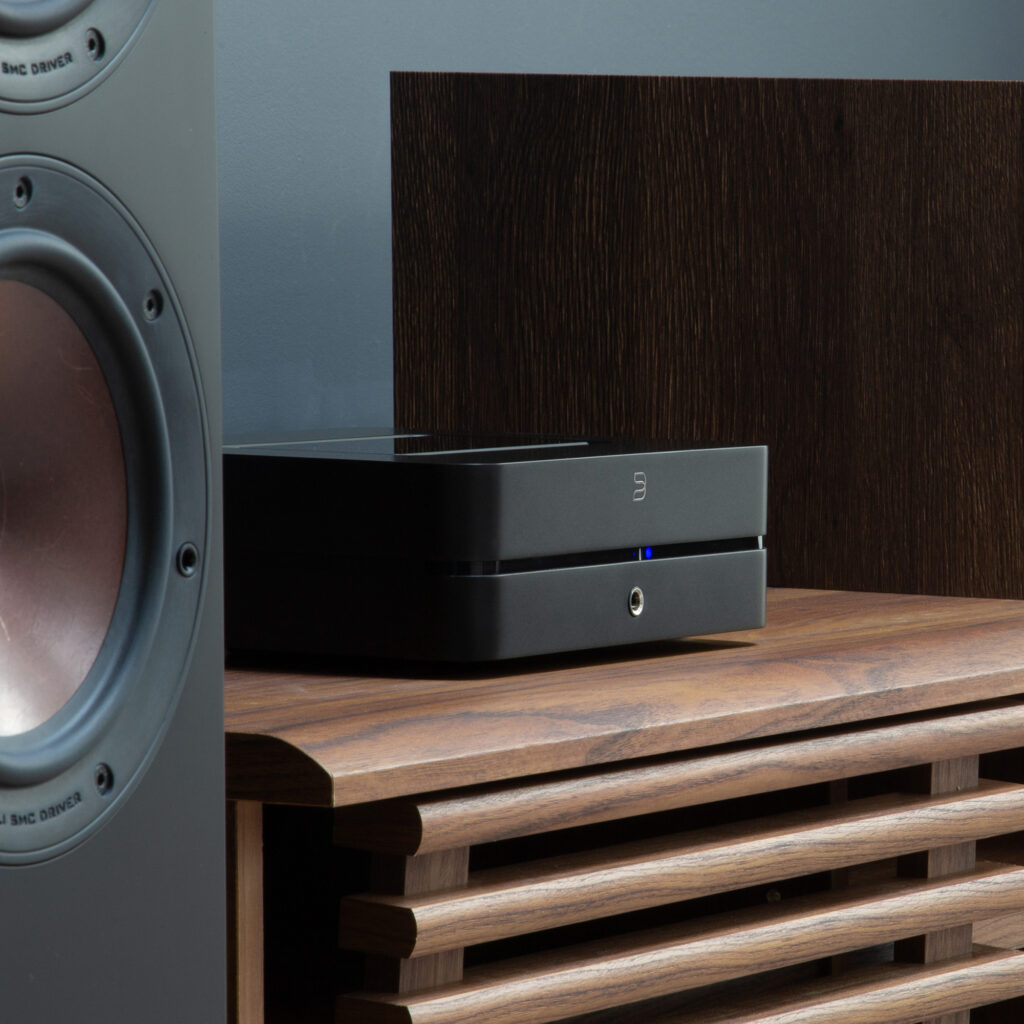
Bluesound Powernode N331 vs N330: What’s New!
The Bluesound Powernode N331 brings several meaningful upgrades over the popular N330. The most significant improvement is the power increase from 80 watts to 100 watts per channel, providing 25% more headroom and better control over demanding speakers. The N331 introduces a dedicated 3-channel output mode with center speaker connection, something not available in the N330. The N331 also upgrades Bluetooth from 5.0 to 5.2 with aptX Adaptive for better connection stability, and includes improved processors that are eight times faster than the N330’s architecture, enabling better handling of complex audio processing and future software updates.
Sound quality improvements are equally notable, with the N331 delivering more refined audio performance compared to the N330’s already engaging, musical presentation. While the N330 was praised for its rhythmic drive and punchy sound, the N331 takes refinement further with tighter bass control, cleaner midrange clarity, and more open highs. The newer model also handles complex musical passages with better instrument separation and a more expansive soundstage. The N331’s enhanced 6.3mm headphone output is an upgrade over the N330’s standard headphone implementation. For existing N330 owners, the upgrade is worthwhile if you need the center channel output for home theater, and if you want the improved power and audio refinement. However, the N330 remains an excellent choice for stereo-focused setups on a tighter budget.
Alternatives To The Bluesound Powernode
Eversolo Play ($699-$799) – If you’re looking for a more budget-friendly streaming amplifier option, the Eversolo Play offers excellent value with its 60W/110W Class D amplification, built-in phono stage for turntables, and impressive 5.5-inch touchscreen interface. While it lacks the Powernode’s center channel capability and higher power output, the Eversolo Play compensates with comprehensive room correction via smartphone microphone, extensive EQ options (15-band graphic and 10-band parametric), and support for high-res audio up to DSD512. The natural, warm sound signature and robust streaming platform support make it an attractive choice for those prioritizing affordability without sacrificing core streaming amplifier functionality.
Read our full review of the Eversolo Play.
Rotel RAS-5000 ($2,999) – For those seeking a serious step up in power and build quality, the Rotel RAS-5000 offers 140W at 8 ohms and 220W at 4 ohms, providing significantly more headroom than the Powernode N331 for demanding speakers. This EISA award-winning streaming amplifier features a custom toroidal transformer, aluminum construction, and an exceptionally neutral sound signature with tight, controlled bass and wide soundstage presentation. While this streaming amp also lacks the Powernode’s center channel capability and costs twice as much, the RAS-5000 makes up for it with superior build quality, more powerful amplification, and comprehensive connectivity, including USB-B for local files and HDMI eARC, making it ideal for audiophiles who prioritize pure stereo performance.
Read our full review of the Rotel RAS-5000.
Verdict: Should You Get The Bluesound Powernode N331?
The Bluesound Powernode N331 represents a significant upgrade in streaming amplifier technology, successfully building upon the strengths of its popular predecessor while addressing key areas for improvement. With its refined sound quality, versatile connectivity options, and innovative features like the dedicated center channel output, the N331 delivers exceptional value in the under-$1500 streaming amplifier category. While the optional Dirac room correction adds to the overall cost, the N331’s impressive performance, user-friendly BluOS app, and extensive smart home compatibility make it a compelling upgrade that will satisfy demanding listeners for years to come. If you’re looking for a premium streaming amplifier that excels in both stereo and surround sound applications, the Bluesound Powernode N331 is absolutely worth the investment.
